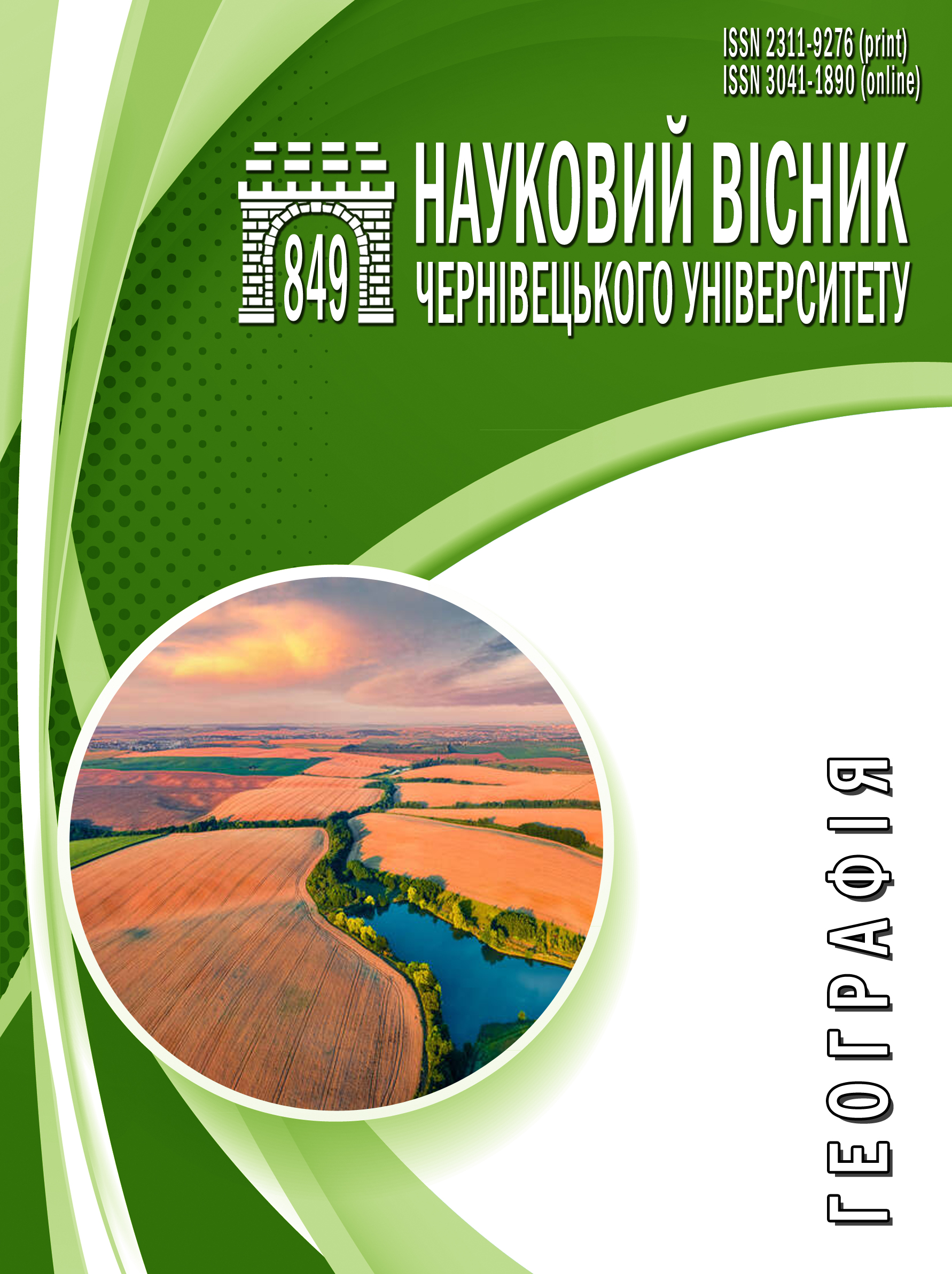Peculiarities of access to hydrological data and their use on the example of well-known databases of hydrological information
DOI:
https://doi.org/10.31861/geo.2024.849.40-45Keywords:
hydrology, database, time series, statistics, water runoffAbstract
The purpose of this work is to categorize and provide characteristics of the existing hydrological information databases and also to demonstrate the modern capabilities of using hydrological data. The subject of the study is the use of hydrological data stored in databases for research and modeling.
The main focus of the study is on various existing hydrological information databases. The most well-known public databases and methods of accessing them are described in order to guide researchers through the process of using public hydrological data.
One of the most popular ways of accessing hydrological database is using public web interface. Most of the well-known public databases provide web interface for the anonymous user access. Usually, the process of reaching the data is simple, user need to perform several common steps. Firstly, web interface needs to be loaded in the web browser, next steps are selecting the desired region and time span. Additionally, subset of hydrological parameters can be selected in order to minimize network traffic. And lastly, data can be loaded by submitting web form. The result is usually presented in the form of table, or as an interactive trend.
Another way of obtaining hydrological data from the public database is making a request for data export to the database owner organization. As an example of this approach, GRDC database access is described. GRDC can export data in several popular formats of the hydrological data, such as CSV, NetCDF or WaterML2. In order to get the data, you need to fill in the access request form, which contains personal contact data, scientific institution contact data and subject matter. After accepting the request, GRDC sends back exported archive via email. Data can be transformed and integrated into GIS software or hydrological model.
Additionally, in the work, there is a mention of approaches to the standardization of hydrological data, which can be used to build a private hydrological database. According to the modern standards, private relational database is the most efficient way of storing hydrological data, because of high integrity quality of this approach. Most of the modern GIS software, as well as hydrological modeling systems, are capable of integration with different types of relational databases. This is a promising direction for the next research.
References
Горбачова, Л. О. (2006a). Сучасні пріоритети та напрямки гідроекологічних досліджень річкових басейнів. Гідрологія, гідрохімія і гідроекологія, (11), 338-342. [Horbachova, L. O. (2006a). Suchasni priorytety ta napriamky hidroekolohichnykh doslidzhen richkovykh baseiniv. Hidrolohiia, hidrokhimiia i hidroekolohiia, (11), 338-342.]
Горбачова, Л. О. (2006b). Особливості створення тематичних блоків цифрових баз даних розрахункової гідрологічної інформації. Наукові праці УкрНДГМІ, (255), 283-290. [Horbachova, L. O. (2006b). Osoblyvosti stvorennia tematychnykh blokiv tsyfrovykh baz danykh rozrakhunkovoi hidrolohichnoi informatsii. Naukovi pratsi UkrNDHMI, (255), 283-290.]
Самойленко, В. М. (2003). Основи геоінформаційних систем. Методологія. Київ : НікаЦентр. [Samoilenko, V. M. (2003). Osnovy heoinformatsiinykh system. Metodolohiia. Kyiv : NikaTsentr.]
Самойленко, В. М. (2004). Досвід створення баз та інформаційних систем гідроекологічних даних. Гідрологія, гідрохімія і гідроекологія, (6), 200-207. [Samoilenko, V. M. (2004). Dosvid stvorennia baz ta informatsiinykh system hidroekolohichnykh danykh. Hidrolohiia, hidrokhimiia i hidroekolohiia, (6), 200-207.]
AQUASTAT Dissemination System. FAO (web interface) (2024).
GRDC Data Portal. Federal Institute of Hydrology, Germany (web interface) (2024).
Guide to Hydrological Practices, Volume I Hydrology – From Measurement to Hydrological Information (2008). Geneva.
Hydrology Data Explorer. British Government (web interface) (2024).
National Water Information System: Mapper. USGS (web interface) (2024).
10. Thirteenth World Meteorological Congress Abridged Final Report with Resolutions (1999). Geneva.
Published
Issue
Section
License
Copyright (c) 2024 Scientific Herald of Chernivtsi University : Geography

This work is licensed under a Creative Commons Attribution-NonCommercial-NoDerivatives 4.0 International License.


